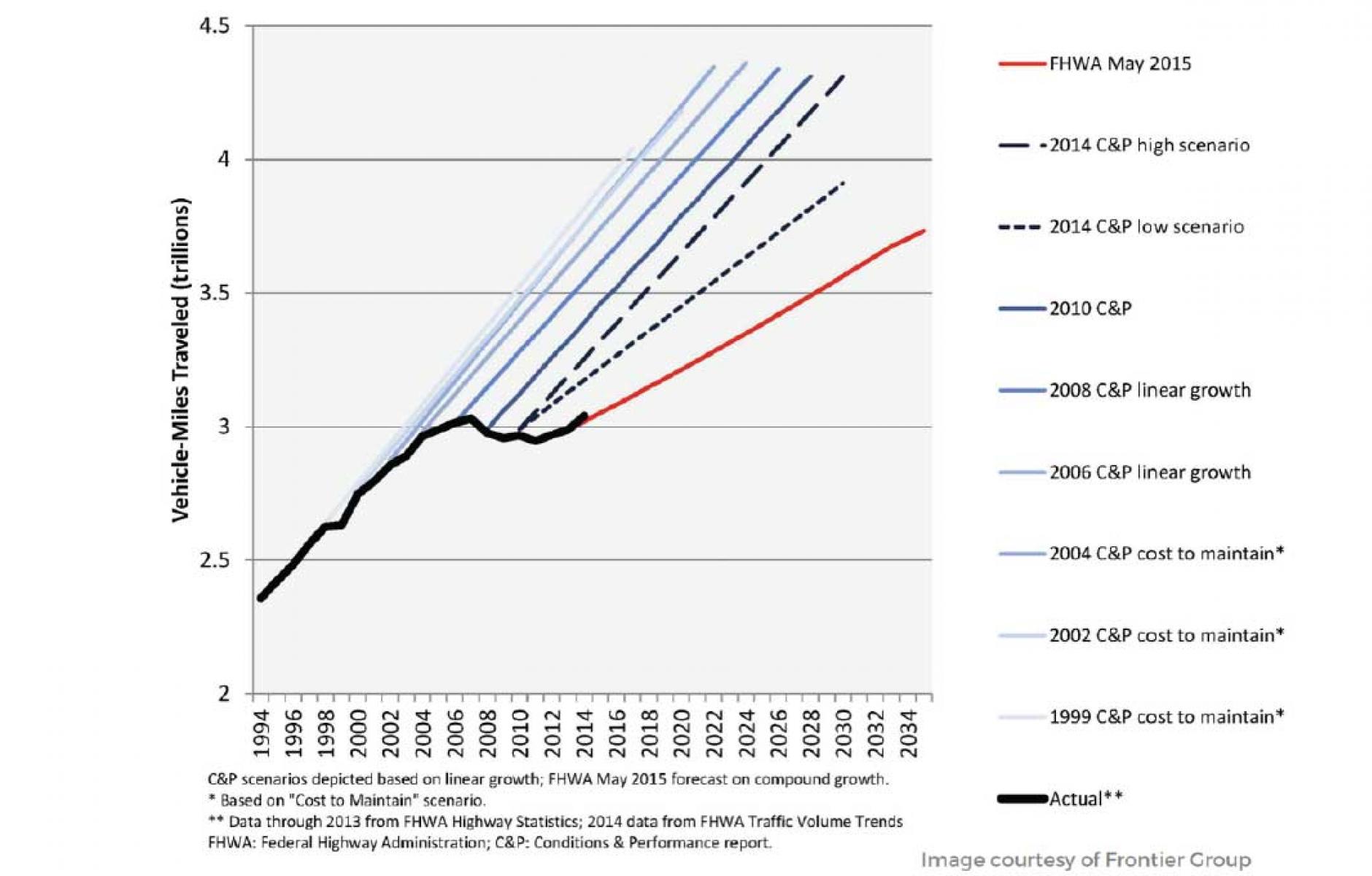
Rear-view mirror predictions on US motor travel
For most of the 20th Century, US vehicle miles traveled (VMT) rose relentlessly. At the turn of the new millennium, the pattern changed substantially, but the view of the Federal Highway Administration (FHWA), did not.
Above is a graph that shows FHWA's predictions for growth of motor vehicle travel, relative to the actual change, in heavy black. Each time the Administration made a new prediction on VMT, it pointed up at the same steep angle even as the actual line showed little or no growth. After a decade and a half of embarrassing error, the FHWA finally changed the predicted angle of growth in 2015 (red line).
Even a non-expert should have been able to see that something had changed—but the paid government experts were slow to catch on. The saying "If all you have is a hammer, everything looks like a nail," comes to mind. The FHWA's hammer is automobile-oriented thoroughfares. Rather than put down the hammer or pick up a new tool, the Administration held on to an outdated view.
People should care because billions of dollars in infrastructure decisions are based on these growth lines. Some new highways that have been in planning for 20 years based on the earliest, highly erroneous, predictions are just now nearing construction. These highways are often damaging to cities and towns and also represent an opportunity cost of money not spent on diverse places with transportation choice. Anybody who is familiar with the concept of induced demand knows that automobile-oriented infrastructure generates more VMT—so faith in ever-rising vehicle traffic is at least partly self-fulfilling. It was probably inevitable, given the rear-view mirror prophesies used to justify thoroughfare expansion, that vehicle miles would eventually being to rise again. Is this how to plan and build transportation infrastructure?




